Straplines, slogans, taglines… however you refer to them, you’ll recognise a good one when you see it or hear it. Think of Apple’s Think Different, Tesco’s Every Little Helps and HSBC’s The World’s Local Bank.
Iconic brand straplines might just be a few words long, but they have the power to lurk in our memories long after we hear them, flash into our consciousness at that all-important moment of selection and convert us into brand devotees.
But what turns two or three simple words into a stroke of marketing genius? Here are a few lessons to be gained from some of the greatest brand slogans of all time.
1. Don’t expect to write a strapline quickly
An effective brand strapline might be composed of just a few meticulously-chosen words, but simple to write, they are not.
Think Different took months to formulate and was rejected by Steve Jobs at first presentation. There might be the odd story of straplines being scribbled down on a serviette with a lightning strike of inspiration, but in reality, they are usually a long slog.
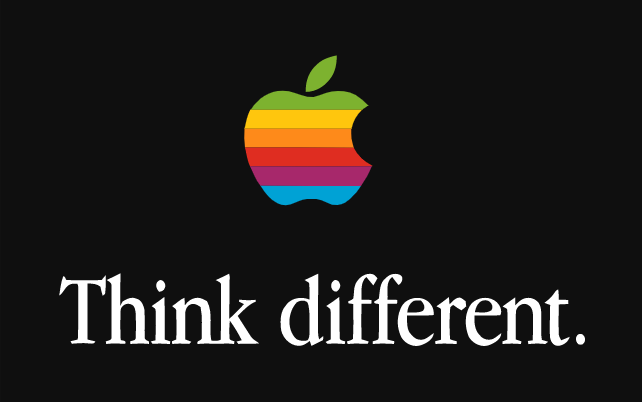
Apple’s ‘Think Different’ campaign strapline is credited with reversing its fading fortunes.
A successful strapline will achieve four key things
- Tell your audience something about who you are, your values and ethos
- Differentiate you from other brands
- Appeal to your audience and resonate with them
- Be highly memorable
And achieving all of that in just a few words is hard.
Just as Mark Twain said, “I didn’t have time to write a short letter, so I wrote a long one instead,” expect the strapline writing process to take you a fair while.
2. A great strapline will tell your audience what your core value is
In 2002, HSBC rebranded itself as ‘The World’s Local Bank’ and in doing so created one of the most well-known and successful slogans in banking history. Despite dropping the line in 2011 (another casualty of the financial crisis and cuts to HSBC’s worldwide banking network), it’s still a line that’s linked to the finance giant.
Why was it so successful? Several reasons (check this slogan off against the bullet point list above… it gains full marks), but perhaps its greatest achievement was that it spoke simply and powerfully to something people wanted from a bank; friendly, local, easily accessible service. And which HSBC cleverly suggested they weren’t getting elsewhere. Without using any cliched lines about putting their customers first, they told their audience they put their customers first. The word ‘world’ added into the mix adds a sense of trustworthiness, which, when placed with ‘local’ became a winning combination.
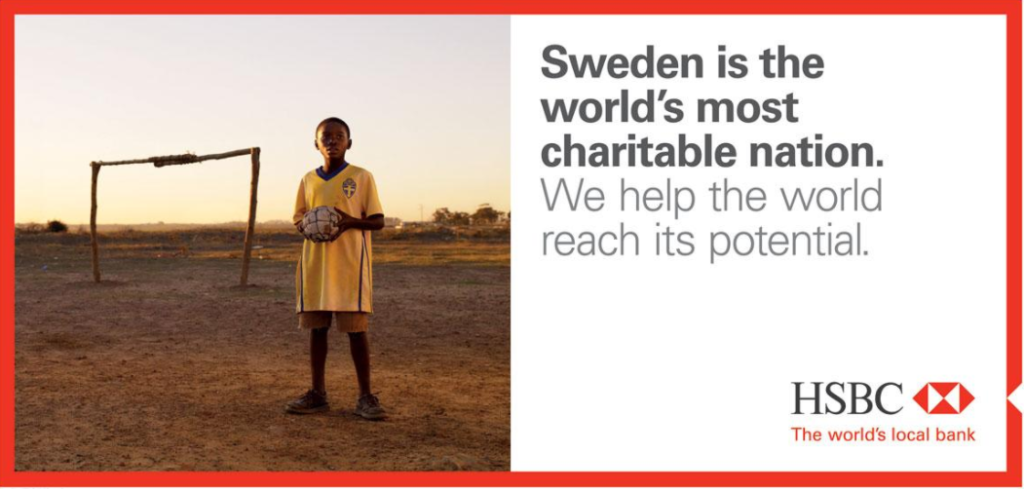
HSBC is still remembered as being ‘The World’s Local Bank’ despite dropping the strapline in 2011.
3. Make sure you align your purpose and personality with the type of strapline you use
Most straplines fall into one of three categories:
- Descriptive
To the point, these kinds of straplines tell the customer in a few short words who you are and what you do. They’re not necessarily as ‘clever’ and don’t show off as much personality as some others but if you’re not a well-established business and you don’t possess a brand name that reveals the nature of your business, this type of strapline can be really helpful.
Examples include:
Carlsberg: Probably the best beer in the world
Innocent: Little Tasty Drinks
Lindt: Master Chocolatier since 1845
Walker Morris: A Distinctive Law Firm
Guy Salmon: Prestige Rental
- Aspirational
‘Think Different’ is one of the most recognisable, iconic slogans in brand history. It’s been credited with turning Apple’s fading mid-1990s fortunes on their head and in doing so, laying the foundation for the cult-like status it holds today. And it’s a perfect example of what’s known as an ‘aspirational strapline’. Aspiration straplines tell you about a company’s values or ethos and call to something within the target audience that they aspire to be.
Examples include:
Nike: Just Do It
L’Oréal Paris: Because You’re Worth It
Coca-Cola: Open Happiness
Ford: Go Further
Gillette: The Best A Man Can Get
Wickes: Let’s Do It Right
Budweiser: The King of Beers
- A combination of the two
Coming somewhere between descriptive and aspirational, combination straplines tell the customer what the brand does, but in a way that also tells you something about their values.
Examples include:
Mr Kipling: Exceedingly Good Cakes
Nokia: Connecting People
Subway: Eat Fresh
Panasonic: Ideas for life
NatWest: Helpful Banking
Selecting the right type of strapline, one which is suited to your brand personality and what you’re trying to achieve with your campaign, could make a big difference to your chances of success. To gain results in raising awareness of yourself as a new brand, choose a descriptive strapline. If you aim to capture the attention of a particular group of prospective clients with a certain set of values and needs, then go for an aspirational strapline. Combination straplines might be better suited for a longer-term campaign as a strapline you see moving with you as you grow.
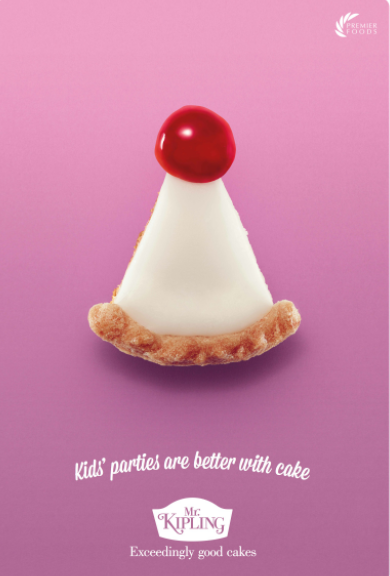
‘Exceedingly good cakes’… a line that combines descriptive and aspirational elements to create a memorable brand strapline.
4. Differentiate yourself (but do it positively)
An effective strapline will set you apart from your competitors and reinforce (or create) your brand identity in the mind of your audience. But make sure you emphasise the positives rather than calling your competitors out negatively.
While McDonald’s might currently have an ad campaign proclaiming ‘quality coffee shouldn’t cost a fortune’ (their italics), it’s generally not considered a good idea to sell yourself on the basis of not being someone else. The fact McDonald’s have had to use italics on the ‘cost a’ wording is also perhaps a clue it’s a tactic that won’t be well-understood.
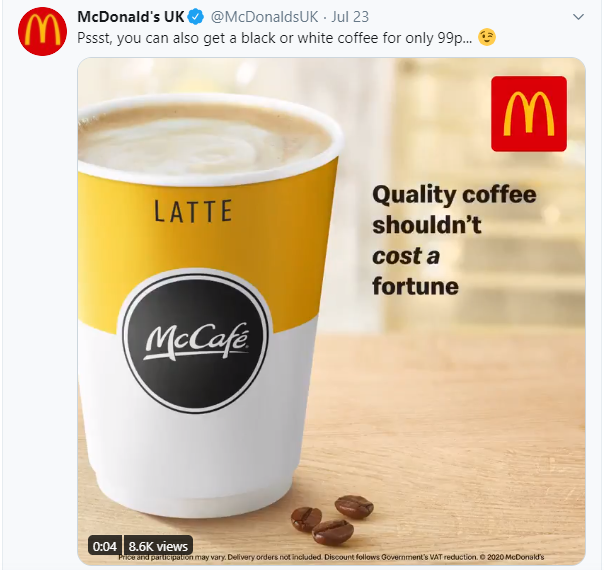
McDonald’s takes a poke at Costa – not always a great idea.
Leaving aside the possible legal hot water you could land yourself in if you start to diss your rivals, the history of brand success stories shows us that the best slogans work by drawing positive associations in the customer’s mind.
Pickfords: The Careful Movers is a nice example of this. Without overtly saying our rivals will drop and break all your precious belongings, they’ve managed to differentiate themselves as a removal firm who value taking care of your treasures. Which was particularly smart when their rivals had slogans that focused on getting the job done quickly, easily or cheaply instead.
5. Make it memorable
Good straplines rarely exceed more than five or six words. Why? Because brevity makes them catchy.
There are some simple linguistic tricks you can use to help a strapline stick in the mind of the audience. Alliteration (using words that start or end with the same sounds) is a common tool used by advertisers, as are slogans that rhyme, use repetition or have an easy, sing-song rhythm to them.
Think of:
‘Maybe She’s Born With It, maybe it’s Maybelline.’
‘There are some things money can’t buy. For everything else, there’s Mastercard.’
‘Finger Lickin’ Good’ (KFC)
‘Snap, Crackle, Pop’ (Rice Krispies)
‘You can do it when you B&Q it’
‘Have a break, have a KitKat’
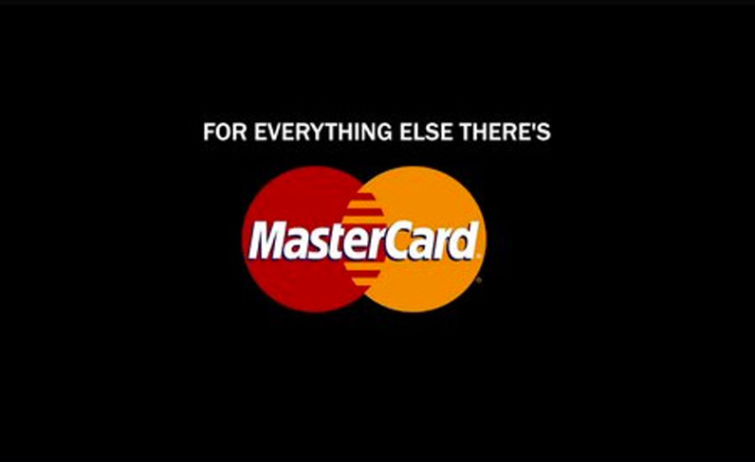
First coined in 1997, the Mastercard slogan has an easy-to-remember rhythm to it.
Used wisely and consistently, a slogan can be hugely beneficial in helping you build an enduring and easily-identifiable brand. Straplines are therefore one of the most powerful marketing tools in your toolbox.
We have plenty of experience developing straplines for new and existing financial service brands. If you’d like some help with this or any other aspect of your marketing, we’d be very happy to talk to you.
You can get in touch with us at hi@theyardstickagency.co.uk or 0115 8965 300.


